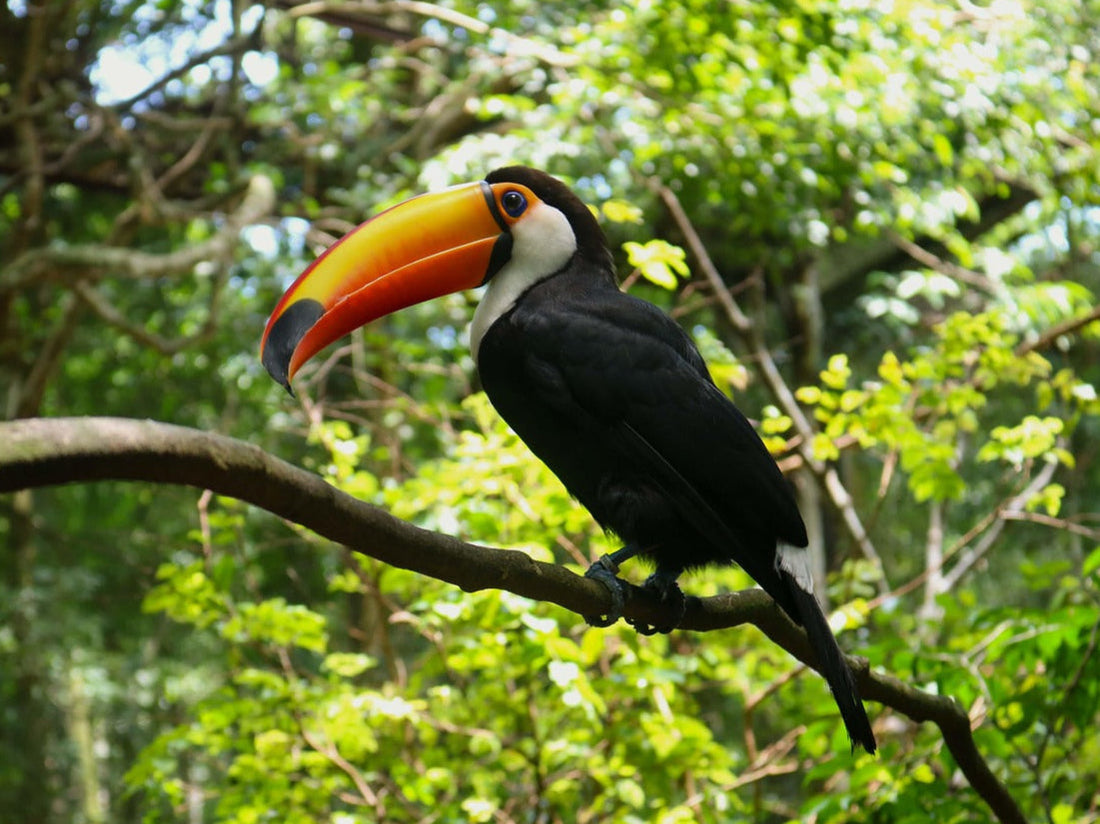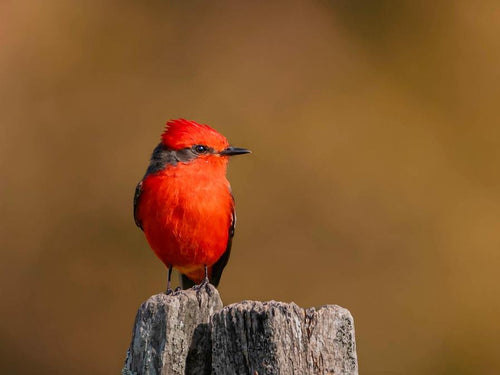The Fascinating World of Bird Beaks: Shapes, Functions, and Backyard Insights
TTNatureTeam
A bird beak isn't just a mouth. It's a survival tool shaped by nature. Ever spotted a bird with a long beak in your yard? That’s no accident. Each beak tells a story—what the bird eats, how it lives, where it hunts. A bird might crack seeds. One with a long beak might fish.
Look closer next time. What’s that beak telling you? The more you watch, the more you’ll learn.
From Seed-Crackers to Fishers: The Secret Life of Bird Beaks
Bird beaks are incredible. They’re not just for eating—they’re precision tools shaped by millions of years of evolution. Their form reveals how each species survives and thrives. A long, slender bill might be perfect for sipping nectar or spearing prey, while a thick, heavy one is made for cracking open tough seeds or nuts.
Charles Darwin first observed this in finches, noticing that birds with stronger, deeper bills survived better during dry seasons because they could eat harder seeds. Meanwhile, those with finer, narrower bills were quicker and more efficient at catching insects when food was abundant.
Some birds, like woodpeckers, use their beaks as chisels, pecking up to 20 times per second to reach grubs hidden in tree bark. Others, like ducks, filter tiny creatures and debris from water at a rate of nearly 60 gulps per minute. Pelicans have pouches so elastic they can scoop up and hold over 3 gallons of water—draining it before swallowing their catch.
Raptors possess sharp, hooked bills capable of tearing flesh with incredible force—over 200 pounds per square inch in some cases. Parrots have curved, muscular bills that serve double duty, allowing them not only to crush tough shells but also to climb branches like using a third limb. And crossbills? Though their beaks look odd, their crisscrossed tips let them pry open pine cones with impressive speed and precision.

Some birds don’t specialize—they adapt. Jays, crows, and tropical species like toucans use their bills to forage, feed, intimidate, and even cool themselves. The toucan’s huge bill, for instance, is remarkably lightweight and functions like a built-in radiator, helping regulate body temperature in hot climates.
So the next time you spot a bird, take a moment to study its bill. Is it long and narrow, short and stout, sharply hooked or oddly shaped? That little detail holds a whole world of insight about how that creature finds food, builds nests, stays cool—or even survives harsh seasons. Nature, once again, designed exactly what was needed.
Birds with Long Beaks and Big Beaks: A Closer Look
Some birds have evolved beaks that push the limits of size and function. If it’s a bird with a long beak used for precision feeding these adaptations are as beautiful as they are useful. Let’s explore a few standout examples.
Great Blue Heron: A Spear for Fishing

The Great Blue Heron is a classic example of a bird with a long beak. Its straight, pointed bill functions like a spear. Standing motionless in shallow water, the heron watches patiently before striking lightning-fast to catch fish, frogs, or even small mammals. That long, dagger-like beak makes it one of the most efficient hunters among wading birds.
Sword-billed Hummingbird: Nectar at Any Depth

Photo by Andy Morffew
Found in the Andes, the Sword-billed Hummingbird holds a unique title: it’s the only bird with a beak longer than its entire body. This extreme adaptation allows it to feed from deep tubular flowers that other hummingbirds can’t reach. Even in North America, hummingbirds like the Ruby-throated Hummingbird use long, slender beaks to sip nectar with their tongues flicking in and out at lightning speed.
Black Skimmer: Skimming the Surface

The Black Skimmer features a truly bizarre adaptation—its lower mandible is longer than the upper. This bird with a long beak feeds by flying just inches above the water, letting its bottom beak skim the surface. When it detects a fish, the beak snaps shut. It’s one of the few birds that feed by touch, rather than sight.
Toco Toucan: Big, Bold, and Surprisingly Light

The Toco Toucan might be the most iconic bird with a big beak. Its oversized orange bill looks heavy, but it’s mostly hollow, making it light and easy to use. The toucan uses its bill to pluck fruit from high branches, court potential mates, and intimidate rivals. It also plays a surprising role in thermoregulation—releasing excess body heat in tropical climates.
Hornbill: The Casque-Headed Climber

Hornbills are tropical birds known for their massive, downcurved beaks and prominent “casques”—helmet-like structures on top of the bill. Their big beaks are multifunctional tools: used to call, forage, carry food to nests, and perform elaborate courtship displays. Some species even seal the female inside a tree cavity with food passed through the bill until the chicks hatch.
American White Pelican: A Built-In Fishing Net

Photo by Manjith Kainickara
One of the most practical birds with big beaks is the American White Pelican. Its long bill ends in a pouch that can expand to scoop up fish along with gallons of water. After draining the water, the pelican swallows its catch whole. A pelican’s beak can measure over a foot long—perfectly adapted to its aquatic lifestyle.
Pileated Woodpecker: Nature’s Carpenter

The Pileated Woodpecker boasts a strong, chisel-like beak used to hammer deep into tree bark. It hunts for insects like carpenter ants and creates nesting cavities. Its powerful beak and shock-absorbing skull let it drill all day without injury. If you hear loud, rhythmic tapping in your yard, it might be this striking bird.
Blue Jay: The Backyard Breaker

Common in North American yards, the Blue Jay is armed with a thick, muscular beak ideal for cracking acorns and peanuts. This smart and adaptable bird with a big beak also uses its bill to carry nesting materials, mimic calls, and sometimes even dig for hidden insects. It’s a versatile tool for a very resourceful bird.
Tips for Observing Beak Behavior in Your Backyard
Want to understand birds better?
Start with the beak. A bird’s beak shows you how it eats, builds, and survives. You don’t need to leave your backyard. Just look closer.
Use the right tools. Binoculars are great, but tech makes it easier. TT Nature’s Smart Bird Feeder comes with an AI camera that snaps birds as they feed. You’ll see a chickadee pecking suet or a finch cracking seeds—all from your phone. That’s close-up birdwatching without scaring them off.
Want more beak action?
Offer variety. Put out thistle seeds and goldfinches will visit. Add suet or peanuts to bring woodpeckers. Sugar water? Get hummingbirds and admire those long, needle-like beaks. Each food invites a new beak type.
Watch how birds eat. A mourning dove swallows seeds whole. A finch peels one seed at a time. Blue jays hammer nuts with power. Ever seen a crow drop food from high up to crack it open? That’s beak strategy in action. Take notes. You’ll start seeing patterns.
Nesting season?
Birds use beaks as tools. Swallows scoop mud. Wrens collect twigs. Woodpeckers carve homes. Keep birdhouses ready—give them a place to work.
Need help with ID?
Use a guide or app. TT Nature’s app can tell you which bird you’re seeing and why its beak is special. The more you learn, the more fascinating your backyard becomes. So grab your feeder, open your eyes, and let those beaks tell their stories.
Conclusion
From the tiniest hummingbird to the boldest toucan, every bird beak tells a story. A bird with a big beak? Likely a seed-crusher or fruit-grabber. A bird with a long beak? Maybe a nectar-sipper or insect-spearer. Each shape has a purpose.
At TT Nature, we blend smart tech with a love for wildlife. Our smart feeders let you spot, snap, and learn. Watch, share, and enjoy. The more you observe, the more these beaks will fascinate you—right from your backyard.




